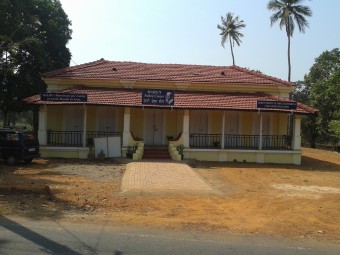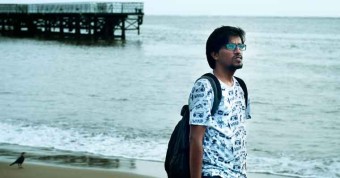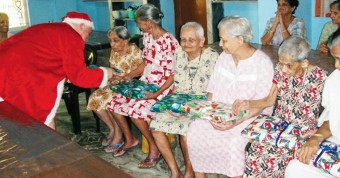She was young and beautiful. He, shop tall, lanky and fun-loving. Both 15 years old, they decided to ditch their tutoring sessions one evening and go for a joy ride. While her mother was asleep, she took the keys to the older woman’s scooter on the sly. Smiles on their faces and the wind blowing their hair, they whipped past fields and shops in the sleepy village of Parra while the boy tried to overtake a minibus in front of a temple, hoping to catch up with his buddies on another bike. He didn’t succeed. The two vehicles collided, and the girl, who had been riding pillion, found herself under the bus, dragged several meters before it screeched to a halt.
He escaped with minor cuts and bruises. She died of a broken skull.
This is not a terribly unusual story on the treacherous roads of Goa, where some 300 people die in 4,500 traffic accidents every year, or an accident every two hours. It’s not just 300 dead people, but 300 unfathomable tragedies, each one leaving indelible scars of loss.
Below, Streets takes a closer look at this particular tragedy – occurring last September but repeated on the streets of Goa almost every day – from the perspective of those involved, all of whom requested that their names be withheld due to the private nature of their ordeal.
The girl’s father: “My daughter left the house with my wife’s scooter and bunked her tuition class. She then gave the bike to him. I have heard that some friends were also accompanying the two on another bike. Some people say that it was this other bike that hit our bike. Also, my friend told me that the boy would often borrow his friends’ two-wheelers; he was involved in a rash-driving incident just two weeks before my daughter died. You ask him if this is true.”
Still, there was little ire in the father’s voice.
“What will we achieve if we blame him? She is gone. Whatever was destined has happened. We want to forget everything, move ahead. My son went to his college a day after the death.”
And then he paused. His voice cracking, he asked me how the boy was doing.
“Not so well,” I replied.
“Ask them to take him to a mental hospital. May be he is feeling too guilty and that is causing this. But they must take him to a doctor. “
The father, an engineer, did not file a complaint and when he claimed the body he told police that he wanted as little legal or police complications as possible.
The girl’s mother: The distraught mother sought professional help after the accident. Her husband said she “lost it.” At one point, I reached her by phone but she did not wish to speak and I didn’t want to push it. The family had two children, a son who is mentally challenged and their daughter, now dead.
The boy: I found myself inside the barren living room of the boy’s family. The father sat on a gas cylinder, the mother on the floor, the boy on a chair. I sat on a bed. The youngster began speaking about what happened the morning of the accident.
“On that day, I left with a friend and…” the father abruptly cut him off and ordered him not to speak about the tragedy. Instead, the boy and I exchanged small talk. He told me about his school and his friends. As he spoke, tears welled up and his face wore the look of a rabbit cornered by wolves.
After the crash, the school informed the family that the boy is no longer welcome and, months later, still refused to take him back. He was only allowed to appear for his final exams, which he later told me “didn’t go too well.” He has been complaining of headaches and loss of balance. The advice of the girl’s father has not been heeded, and he has seen to mental health professional.
The boy’s mother: “He is my only child. You know, he was born premature, took two years for him to catch up. Yes, he made a mistake. We all are paying for it. But then, he is my son! I am scared.”
The boy’s father: “About two days after the accident, we mustered up courage to step out of the house to go to his school to request a leave till he got over the trauma. But, they kicked us out. Said you don’t need to come back anymore, you are to blame.”
“We are doomed. We don’t know what to do … And why are you here, madam? Don’t write anything that will bring us more trouble. We just want some school to take him back. Please don’t make an issue. We neither have the energy nor the money to make an issue.”
Until recently, the couple earned their living by cooking and delivering lunch boxes, milk, newspapers or medicines to families in the neighbourhood, for a small fee. They said they’ve been too stressed to work after the accident, that their resources are drying up and that they did not have the money to buy their next batch of blood-pressure and diabetes tablets.
The boy’s aunt: “We were so upset when the school kicked him out that we lost track of everything else. Now, he has started having headaches and a local doctor has suggested we must get a CT scan done immediately. But there’s so much stress … The newspapers have destroyed my nephew’s life by blaming him. They wrote such bad things… Can’t a boy and a girl be friends?”
Officer in-charge: “The investigation was over late October and has been forwarded to the Juvenile Justice Court. As he is below 16, and this is his first offence, there are high chances that he will be given a warning and let off.”
Activist: I asked a prominent city lawyer if a school is within its legal rights to stop a youngster involved in a fatal crash from attending school and he replied with a single word: “No.” Employees of the NGO Bailancho Saad, which recently fought a Right to Education battle, agreed.
An eyewitness, who works at a plant nursery near the scene of the accident: “When I ran up there, she was lying in a pool of blood, her hair flung all about her face. When they picked her up to shift her in the ambulance, I saw her face. She was beautiful.”




